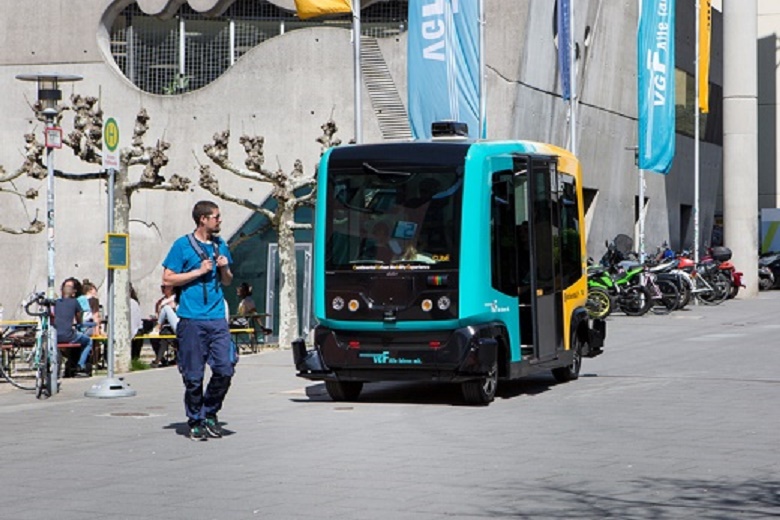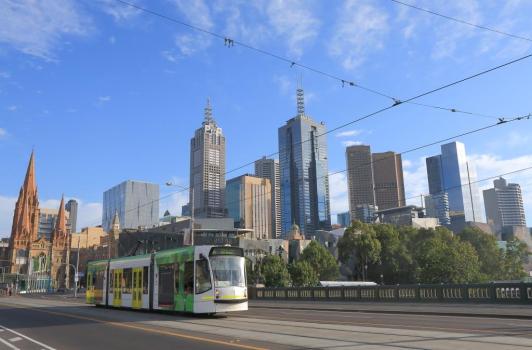
Australia could be just years off from self-driving bus services, a leading transport expert says.
Dr Geoffrey Clifton, senior lecturer in transport and logistics at the University of Sydney, told Government News that while self-driving bus technology is not far off from real-world implementation, the adoption of the technology would require whole-of-government support.

“One day soon the final technological barriers will be overcome and these vehicles will be able to operate,” he said. “Once we’ve got the technology there won’t be many barriers to autonomous buses in a few years’ time.”
The news comes just months after South Australia launched a five-year trial of autonomous shuttle bus technology on public roads in the outskirts of Adelaide and as the NSW Government commences testing of driverless trains in Sydney.
This week, Infrastructure Victoria released its advice on automated vehicle infrastructure, identifying key challenges and opportunities, and outlining 17 recommendations to support driverless technology.
But further government intervention is critical to ensure road infrastructure is maintained and designed to facilitate the widespread adoption of these sorts of technologies, Dr Clifton said.
“The issue of autonomous vehicles, autonomous buses being one form, is going to require a whole-of-government approach bringing in different stakeholders, different parts of government to address issues relating to infrastructure and planning,” he said.
Dr Clifton drew a parallel between the need for infrastructure changes in the 1950s to facilitate light rail and double-decker buses and the need for infrastructure to accommodate self-driving buses in the near future.
“I can see something similar having to take place for autonomous vehicles,” he said.
“If they require changes to the roads, for instance potholes that they can’t get around or a particular roundabout they can’t recognise, that may well mean there has to be a lot of work to enable these vehicles to operate in certain streets.”
Ticketing, security and bus stops
The news comes as a new report suggested Australia is not far off from the widespread use of these transport technologies.
Ticketing, safety and efficiency are among the biggest barriers to the widespread use of driverless buses for public transport, according to Trapeze’s David Panter, the author of the Real State of Play in Self-Driving Buses whitepaper released in August.
The paper says advances in automated technology over the next few years and the continued rollout of trials will likely see existing barriers to the uptake of driverless buses resolved, including ticketing, passenger identification, on-board security and user confidence.
“None of the issues raised here are insurmountable and there is nothing to say that they will not be addressed in the near future. We can be sure that advances in autonomous cars and trucks will flow through to buses over the next 2 – 3 years and during that time, many of these issues will be sorted,” the paper says.
Ticketing is one of the biggest hindrances to the successful roll-out of autonomous buses, the research says, with enforcement of ticketing compromised by the absence of staff.
Providers also need to ensure self-driving vehicles have safety measures, such as alert systems, in place to help passengers who may be in danger.
Autonomous buses are still a way off from being able to effectively respond to changes in routes, such as roadworks, and may become lost, the report says. Legislation also continues to be a barrier to the widespread expansion of driverless vehicles, with issues such as liability in the event of an accident or registration needing to be addressed.
According to Dr Clifton, the main barriers to the implementation of autonomous buses are a lack of infrastructure to support smooth operation of services, questions about interaction with pedestrians and the community’s mistrust of autonomous technology.
“Thinking about how people will be able to flag down a bus on the street, at the moment we rely on a driver. It should be possible for that to eventually be solved or we might end up being like a train which stops and opens doors no matter whether waiting at station or not or might need other technology to signal,” he said.
Questions around how buses will be programmed to respond to pedestrians also need to be resolved.
“Another issue will be determining how these operate with people around, so we want a bus to stop if a kid jumps in front of it, but if that’s the case will buses be able to move through busy city streets?” Dr Clifton said.
Despite challenges the promise of autonomous public transport technology was immense, with the potential to resolve some of Australia’s most pressing public transport issues, he says.
“From the government’s perspective the ability to have driverless buses is a great opportunity to reduce costs because the driver itself is one of the biggest cost sources. So pulling this out will mean governments able to spend less to subsidise public transport,” Dr Clifton said.
“It will mean that services which currently end early in the evening will be able to keep going later into the night and maybe all night and into outer suburban or rural areas. We could spread transport out more because the costs are lower.”
But the community’s willingness to accept the technology will be the decisive factor, Dr Clifton says.
“All of the current barriers seem to be solvable and it’s just a matter of more technology. However, that doesn’t mean they will be on the streets or people will be happy for them to be there.”
Irrespective of the pace of change, autonomous public transport technology is just a few years off, the paper predicts.
“Change is coming and the next few years will transformational for passengers. There will be more and more self-driving shuttles on the roads and they will quickly form a vital part of an extended public transportation network. However, there are still issues to be worked through and public acceptance to be gained.”
Comment below to have your say on this story.
If you have a news story or tip-off, get in touch at editorial@governmentnews.com.au.
Sign up to the Government News newsletter.
2 thoughts on “Self-driving buses just around the corner, expert says”
Leave a comment:
Most read
Scathing report finds little has changed at PwC
Qld council welcomes progress on massive battery system
Inquiry to consider how federal govt can address councils’ sustainability issues
‘Local’ procurement turns out not to be so local, committee hears
Another report finds local government falling down on cyber security



The sooner the better. Trackless driverless trams should follow much cheaper to install than light rail and to run only on dedicated lanes no issues with pedestrians.
Take this article to an actual bus driver and they’ll tell you the technology is nowhere near close. An example; School kids do not give sufficient positive indication of their intentions to board or disembark a bus. Attempts to teach them constantly fail and only a human brain can read the fine body language required to deal adequately with passenger’s needs. A 17 tonne bus can be accurately maneuvered around tight suburban streets by the best computer available- the human brain. In comparison autonomous trials have involved very small ‘Buses’ (minivans really) limited to 30km/h in straight, easy runs. They have failed miserably when seagulls fly close to them, when clouds block GPS reception and when they approach roundabouts (they become completely hamstrung by the complicated give way priorities). These are just a few examples, I could go on forever. Don’t believe me? Ask a bus driver what they think! The technology and actual implementation may never come to fruition on this one.